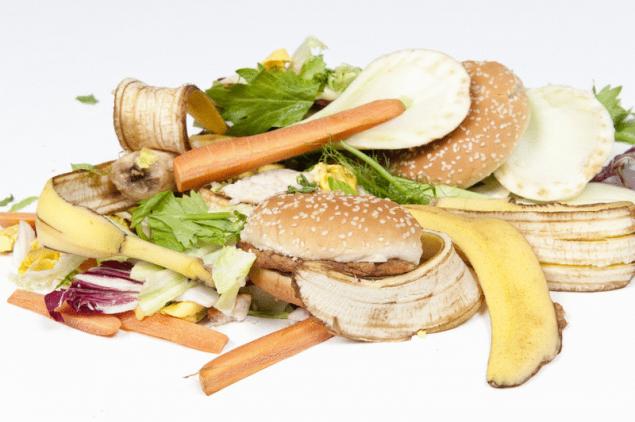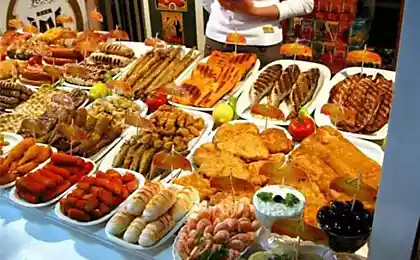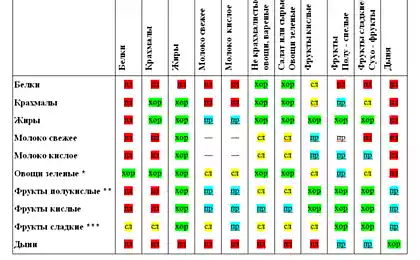453
Annually in the world is thrown 30% of the products
The UN estimates that a third of all food grown is thrown away.About 40% of all food produced in the United States is never eaten.

In Europe emit 100 million tons of food annually.If you break down the quantity of disposable products per capita in Europe and North America is 95 to 115 kilograms per year, while in Africa South of the Sahara and in South / Southeast Asia is only 6-11 kg per capita per year, according to Isabelle Denis from the Department of communication of FAO in Brussels. And yet in the world there are 1 billion hungry people.
The latest report from the expert group of the UN Committee on world food security concludes that products get to the junkyard for various reasons in different parts of the world and therefore decides this issue needs at the local level.

For example, take Chris Pawelski, an American farmer in the fourth generation who grows onions in the state of new York. He is forced to sell most of them grown onions large stores that only accept onions of certain size and appearance."If the bulb is less than two inches in diameter or too wet or too dry, the store just refuses to buy it," says the farmer.
In the past such rejected goods were sent directly to landfill. But now Pawelski contacted the local charity City Harvest, which distributes food among poor residents of new York.
According to the philanthropists, this year they will save from the destruction of 21 million kilograms of food products — this includes products from local farmers, unsold goods from the stores and restaurants.

In the UK studies have shown that households throw away around 7 million tonnes of food per year, although more than half of them could eat. In Europe the problem is that consumers are confused "term of use" and "expiration date" on food labels.
Professor Pinstrup-Andersen notes that the food in wealthy countries takes up only a relatively small proportion of income so people can afford to throw away food.In developing countries this problem does not arise because of wealth and poverty.

In India, the rapid increase in temperature leads to a deterioration of fruits and vegetables directly to the market stalls. Delhi has the largest fruit and vegetable market in Asia.Lack of investment in agricultural processing methods, transport and storage causes loss of income for small farmers and higher prices for poor consumers.
Terms of calories, farmers harvest the equivalent of 4,600 calories in food per person per day. But on average, we consume only 2000 of those calories — that is more than half of the calories that we produce are lost along the way from farm to table.The FAO report argues that food enough for all, just a lot of it is used inefficiently.
The impact on the environment in this case is enormous. The amount of land needed to grow all the food that is thrown in the world each year equals the size of Mexico (13th largest country in the world). Water used for irrigation in vain-grown crops will be sufficient for the daily needs of 9 million people. Added to this is 10% of greenhouse gas emissions in developed countries.

Created in Brooklyn sewage treatment plants that convert energy in food waste from local schools and restaurants. They are mixed with sewage sludge to produce a useful gas.
This pilot program is now particularly timely. The restaurants of new York will be required to stop the ejection of food waste to landfill in 2015 and they will have to turn to alternative methods of disposal.
But this is only the beginning. As recognized by Professor Pinstrup-Andersen: ". We don't really know how much food is wasted. We just know a lot."
Source: rodovid.me

In Europe emit 100 million tons of food annually.If you break down the quantity of disposable products per capita in Europe and North America is 95 to 115 kilograms per year, while in Africa South of the Sahara and in South / Southeast Asia is only 6-11 kg per capita per year, according to Isabelle Denis from the Department of communication of FAO in Brussels. And yet in the world there are 1 billion hungry people.
The latest report from the expert group of the UN Committee on world food security concludes that products get to the junkyard for various reasons in different parts of the world and therefore decides this issue needs at the local level.

For example, take Chris Pawelski, an American farmer in the fourth generation who grows onions in the state of new York. He is forced to sell most of them grown onions large stores that only accept onions of certain size and appearance."If the bulb is less than two inches in diameter or too wet or too dry, the store just refuses to buy it," says the farmer.
In the past such rejected goods were sent directly to landfill. But now Pawelski contacted the local charity City Harvest, which distributes food among poor residents of new York.
According to the philanthropists, this year they will save from the destruction of 21 million kilograms of food products — this includes products from local farmers, unsold goods from the stores and restaurants.

In the UK studies have shown that households throw away around 7 million tonnes of food per year, although more than half of them could eat. In Europe the problem is that consumers are confused "term of use" and "expiration date" on food labels.
Professor Pinstrup-Andersen notes that the food in wealthy countries takes up only a relatively small proportion of income so people can afford to throw away food.In developing countries this problem does not arise because of wealth and poverty.

In India, the rapid increase in temperature leads to a deterioration of fruits and vegetables directly to the market stalls. Delhi has the largest fruit and vegetable market in Asia.Lack of investment in agricultural processing methods, transport and storage causes loss of income for small farmers and higher prices for poor consumers.
Terms of calories, farmers harvest the equivalent of 4,600 calories in food per person per day. But on average, we consume only 2000 of those calories — that is more than half of the calories that we produce are lost along the way from farm to table.The FAO report argues that food enough for all, just a lot of it is used inefficiently.
The impact on the environment in this case is enormous. The amount of land needed to grow all the food that is thrown in the world each year equals the size of Mexico (13th largest country in the world). Water used for irrigation in vain-grown crops will be sufficient for the daily needs of 9 million people. Added to this is 10% of greenhouse gas emissions in developed countries.

Created in Brooklyn sewage treatment plants that convert energy in food waste from local schools and restaurants. They are mixed with sewage sludge to produce a useful gas.
This pilot program is now particularly timely. The restaurants of new York will be required to stop the ejection of food waste to landfill in 2015 and they will have to turn to alternative methods of disposal.
But this is only the beginning. As recognized by Professor Pinstrup-Andersen: ". We don't really know how much food is wasted. We just know a lot."
Source: rodovid.me























